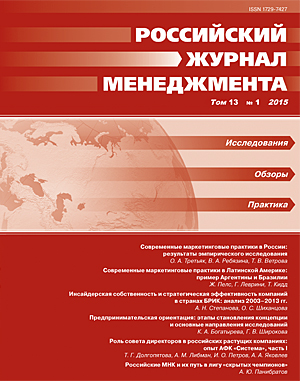Contemporary Marketing Practices in Latin America:
The Cases of Argentina and Brazil
Abstract
It has been argued that it is crucial for the future of marketing science and practice to conduct more research in emerging markets. This paper looks at the marketing practices of Argentina and Brazils as representatives of emerging markets in Latin America. In order to compare the marketing practices in Argentina and Brazil we use the Contemporary Marketing Practice (CMP) framework. The paper’s goal is twofold. Firstly, it aims to identify unique marketing practices in two of the most relevant markets in Latin America; secondly, to further review and revision the CMP conceptual foundations. The paper highlights that there are relevant similarities between Argentine and Brazilian marketing practices as well as differences with regards to previous studies conducted in developed markets. A new cluster, the “Low marketing” practice, is identified. These findings invite for further investigation: first, trying to identify what characterizes this new marketing practice and second, expanding the study to other emerging countries in order to validate the new cluster.
Keywords:
Contemporary Marketing Practice, emerging markets, Latin America, low marketing
Downloads
References
Downloads
Published
How to Cite
Issue
Section
License
Articles of the Russian Management Journal are open access distributed under the terms of the License Agreement with Saint Petersburg State University, which permits to the authors unrestricted distribution and self-archiving free of charge.





